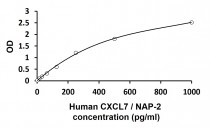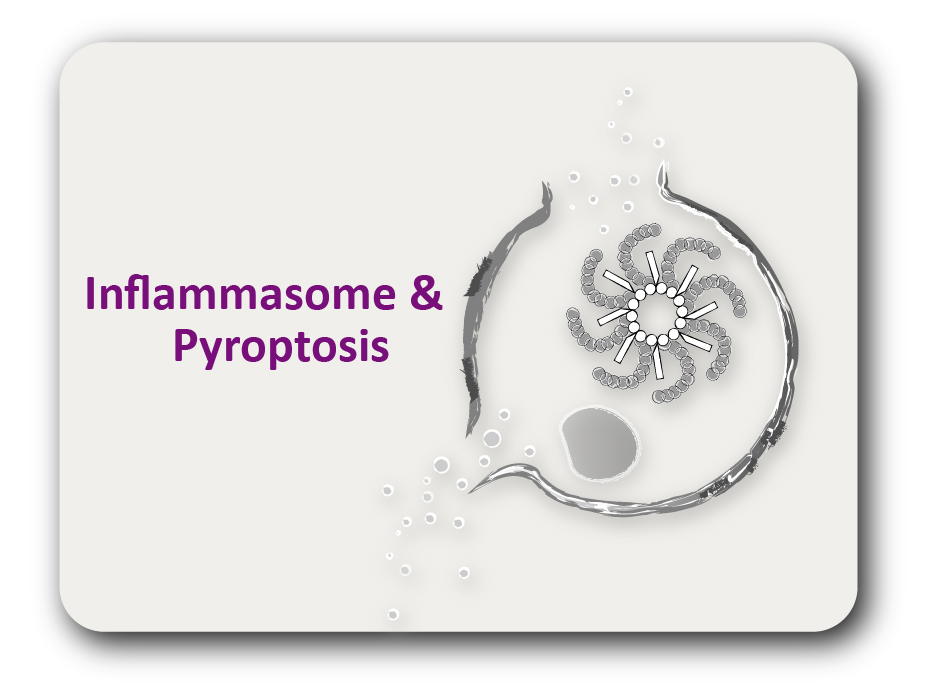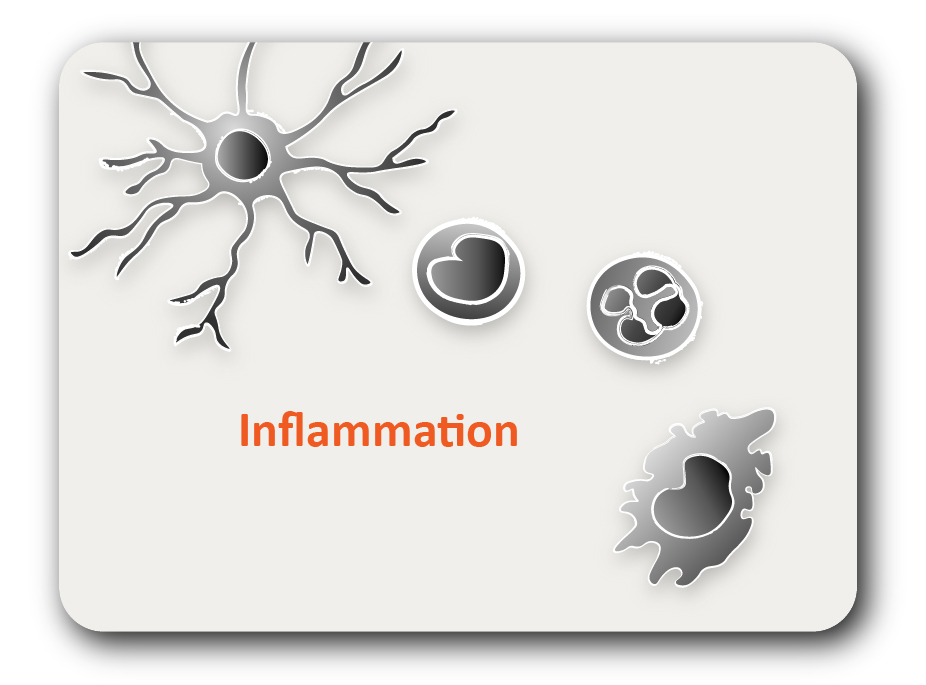ARG81443
Human CXCL7 / NAP-2 ELISA Kit
Human CXCL7 / NAP-2 ELISA 试剂盒 for ELISA and Human
内含物
| 货号 | 内含物名称 | 包装 | 温度 |
|---|---|---|---|
| ARG81443-001 | Antibody-coated microplate | 8 X 12 strips | 4°C. Unused strips should be sealed tightly in the air-tight pouch. |
| ARG81443-002 | Standard | 2 X 10 ng/vial | 4°C |
| ARG81443-003 | Standard/Sample diluent | 30 ml (Ready to use) | 4°C |
| ARG81443-004 | Antibody conjugate concentrate (100X) | 1 vial (100 µl) | 4°C |
| ARG81443-005 | Antibody diluent buffer | 12 ml (Ready to use) | 4°C |
| ARG81443-006 | HRP-Streptavidin concentrate (100X) | 1 vial (100 µl) | 4°C |
| ARG81443-007 | HRP-Streptavidin diluent buffer | 12 ml (Ready to use) | 4°C |
| ARG81443-008 | 25X Wash buffer | 20 ml | 4°C |
| ARG81443-009 | TMB substrate | 10 ml (Ready to use) | 4°C (Protect from light) |
| ARG81443-010 | STOP solution | 10 ml (Ready to use) | 4°C |
| ARG81443-011 | Plate sealer | 4 strips | Room temperature |
概述
| 产品描述 | ARG81443 Human CXCL7 / NAP-2 ELISA Kit is an Enzyme Immunoassay kit for the quantification of Human CXCL7 / NAP-2 in serum, plasma (heparin, EDTA) and cell culture supernatants. |
|---|---|
| 反应物种 | Hu |
| 应用 | ELISA |
| 特异性 | There is no detectable cross-reactivity with other relevant proteins. |
| 靶点名称 | CXCL7 / NAP2 |
| 偶联标记 | HRP |
| 偶联标记说明 | Substrate: TMB and read at 450 nm. |
| 灵敏度 | 7.8 pg/ml |
| 样品类型 | Serum, plasma (heparin, EDTA) and cell culture supernatants. |
| 标准范围 | 15.6 - 1000 pg/ml |
| 样本量 | 100 µl |
| 精确 | Intra-Assay CV: 5.8% Inter-Assay CV: 6.8% |
| 別名 | CTAP3; Platelet basic protein; SCYB7; Macrophage-derived growth factor; THBGB; CTAPIII; C-X-C motif chemokine 7; Beta-TG; NAP-2; Small-inducible cytokine B7; TGB; THBGB1; CTAP-III; PBP; MDGF; TC2; Low-affinity platelet factor IV; Leukocyte-derived growth factor; TC1; 74; 73; 1-66; B-TG1; 1-63; CXCL7; TGB1; 1-81; LDGF; LA-PF4 |
应用说明
| 检测时间 | ~ 5 hours |
|---|
属性
| 形式 | 96 well |
|---|---|
| 存放说明 | Store the kit at 2-8°C. Keep microplate wells sealed in a dry bag with desiccants. Do not expose test reagents to heat, sun or strong light during storage and usage. Please refer to the product user manual for detail temperatures of the components. |
| 注意事项 | For laboratory research only, not for drug, diagnostic or other use. |
生物信息
| 数据库连接 | |
|---|---|
| 基因名称 | PPBP |
| 全名 | pro-platelet basic protein (chemokine (C-X-C motif) ligand 7) |
| 背景介绍 | The protein encoded by this gene is a platelet-derived growth factor that belongs to the CXC chemokine family. This growth factor is a potent chemoattractant and activator of neutrophils. It has been shown to stimulate various cellular processes including DNA synthesis, mitosis, glycolysis, intracellular cAMP accumulation, prostaglandin E2 secretion, and synthesis of hyaluronic acid and sulfated glycosaminoglycan. It also stimulates the formation and secretion of plasminogen activator by synovial cells. The protein also is an antimicrobial protein with bactericidal and antifungal activity. [provided by RefSeq, Nov 2014] |
| 生物功能 | LA-PF4 stimulates DNA synthesis, mitosis, glycolysis, intracellular cAMP accumulation, prostaglandin E2 secretion, and synthesis of hyaluronic acid and sulfated glycosaminoglycan. It also stimulates the formation and secretion of plasminogen activator by human synovial cells. NAP-2 is a ligand for CXCR1 and CXCR2, and NAP-2, NAP-2(73), NAP-2(74), NAP-2(1-66), and most potent NAP-2(1-63) are chemoattractants and activators for neutrophils. TC-1 and TC-2 are antibacterial proteins, in vitro released from activated platelet alpha-granules. CTAP-III(1-81) is more potent than CTAP-III desensitize chemokine-induced neutrophil activation. [UniProt] |
| 产品亮点 | Related products: CXCL antibodies; CXCL ELISA Kits; CXCL Duos / Panels; CXCL recombinant proteins; New ELISA data calculation tool: Simplify the ELISA analysis by GainData |
| 翻译后修饰 | Proteolytic removal of residues 1-9 produces the active peptide connective tissue-activating peptide III (CTAP-III) (low-affinity platelet factor IV (LA-PF4)). Proteolytic removal of residues 1-13 produces the active peptide beta-thromboglobulin, which is released from platelets along with platelet factor 4 and platelet-derived growth factor. NAP-2(1-66) is produced by proteolytical processing, probably after secretion by leukocytes other than neutrophils. NAP-2(73) and NAP-2(74) seem not be produced by proteolytical processing of secreted precursors but are released in an active form from platelets. [UniProt] |
检测图片 (1) Click the Picture to Zoom In
| Title | Download Link |
|---|---|
| ARG81443 Human CXCL7 / NAP-2 ELISA Kit User's manual |
 Download Download
|






